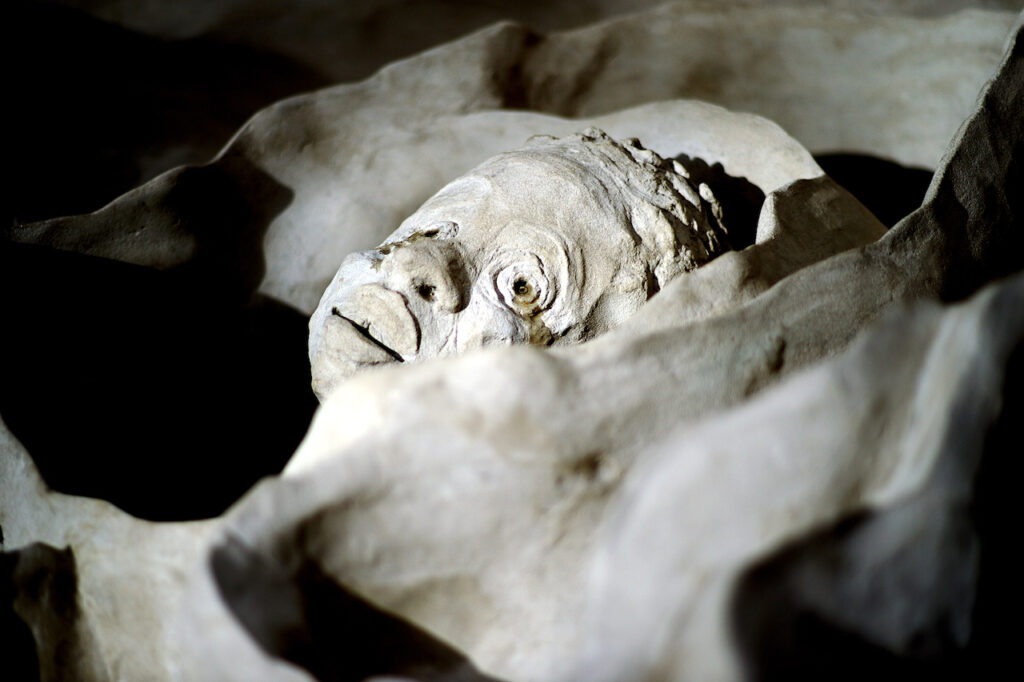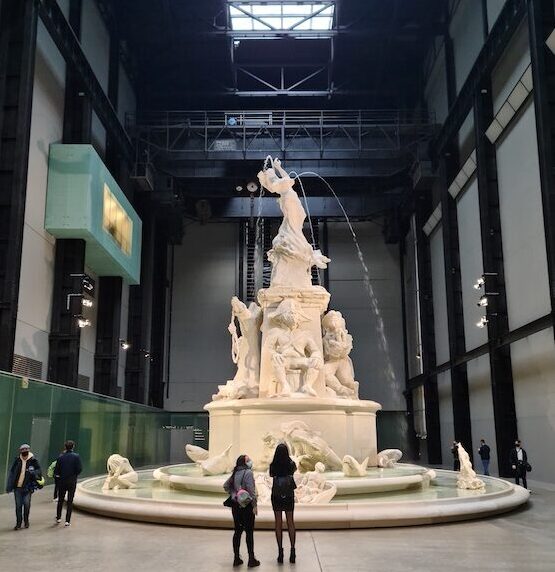I feel like a trespasser. Every step a guilty echo of my crime. The room is shrouded in a dull white. Great columns of concrete mute the busy city outside and artificial lights glare from above – but I find no comfort in sight. It’s as though I have walked into a waiting room: bad news imminent.
Kara Walker’s sculpture Fons Americanus, an artless replica of the Victoria Monument, nestles quietly at the base of the Turbine Hall. People gather hesitantly around the fountain, the mingled look of fear and curiosity etched into furrowed brows. There is an uneasy silence in the air: the face of an uncomfortable truth.
It’s early January and I am visiting the London Tate Museum as recommended by the ‘Top 10 things to do’ Google has spat out for me. COVID-19 is just emerging on the news, but other than the odd xenophobic comment about China and ‘bats’, things seem relatively normal. I mean, as normal as London gets. The coffee is still awful, but sometimes you can snag a good one and perch yourself in an alternative cafe next to an overgrown houseplant. Maybe do some journaling or read something nostalgic.
My journal lays abandoned on the coffee table, the messy black scrawl of my handwriting paused by the smell of warm croissant and jam. Sprawled across its pages are paper printouts of Big Ben and Buckingham Palace, aided by some useless receipts I have kept as mementos. Humans have a way of collecting memories. That faded bus ticket. An old gum wrapper. A receipt for that second-hand book you bought at a dreary looking bookstore. That keychain you got from a street seller. A penny that will never get used. There is a secret history in each page. Each a trail of stories, all connected by time, separated only by a paper edge.
I have always loved stories. The way they make you feel, the histories they tell. Stories connect us to the world. They help us make sense of who we are, how we got there, and who came before.
But stories are dangerous too, not in what they tell, but by what they choose not to tell. Ngozi Adiche in her lecture ‘The dangers of a single story’ says, “The single story creates stereotypes, and the problem with stereotypes is not that they are untrue, but that they are incomplete.”
Kara Walker tells the story of the trans-Atlantic slave trade: the shipment of bodies across the sea to launch and power the colonial empire. The story is gruesome and shocking, but bitterly true. In an interview with Tate Modern, Walker says, “England was the beneficiary of the slave trade and its products, and so you have this kind of institution that spans many hundreds of years and everybody’s implicated in it.”

Unlike the classical portrait of Queen Victoria – Queen of the Empire – the ‘Queen Vicky’ you see in Walker’s sculpture is a grotesque mimic of the horrors of colonial history. Her mottled figure stands atop the fountain’s platform dressed in a twisted skirt of white clay; her gaze skyward in a smirk of ignorant pride. A shrivelled figure huddles under the open fold of her dress, his face buried in his arms as she clutches a round coconut to her chest, the symbol of her bounty, topped off by an oversized crown of woven fabrics.
The scene is comical. Her head larger than her body, the humbled figure a man the size of a child. Imprints of hands lace the moulded clay, the lines of fingers tracing their forms like silent voices. It is haunting. There is no joy in this triumph. Queen Vicky’s face, etched with the burdens of violence the slave trade endured, presents a gruesome portrait of colonial might.
Walker says, “I’m not an actual historian, I’m an unreliable narrator.” But it is hard not to see the truth in her story. The slave trade and its policies saw the torture and devastation of thousands of African people, and colonial success silenced the horrors of its history. The history of African lynchings, systemised brutality and the death of hundreds at sea by the commands of British officials finds a voice in Walker’s colourless silence.
A noose hangs deadly from a gnarled, twisted tree stump. ‘The Captain’, a Jim Crow figure in proud British uniform, overlooks a pool of sharks below. Bodies and coral litter the base of the fountain like gravestones, and the crude figure of Kanye West sinks helplessly in a wooden boat.
Flicking back through my journal I look again at the photographs of the Victoria Monument outside Buckingham Palace. It is crowded and joyful. People huddle around the fountain, smiling for cameras. Picnics spring up on the smooth stone walls. Children point from parent’s shoulders, their faces full of joy above the sea of mingled heads. My eyes wander to the portrait of Queen Victoria gazing sternly over the scene. Her skin is light and smooth, her features perfectly aligned. There are no scars or shadows. No trauma. No pain. No huddled bodies at the base of her skirt. Instead, the words Victoria, Regina Imperatrix, “Victoria, Queen and Emperor” are stamped below her feet, the symbol of peace and progress.
I can’t help but question, who wears that pain? The pain of those who swung from that noose. The cries of those who bled over fields. The silence of those who drowned at sea.
Queen Victoria’s perfect face reads only one imperfect answer: conquest.


